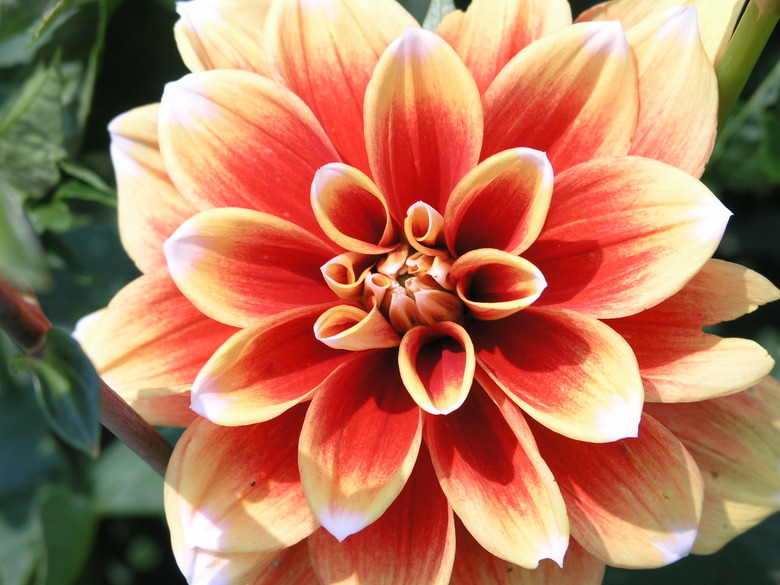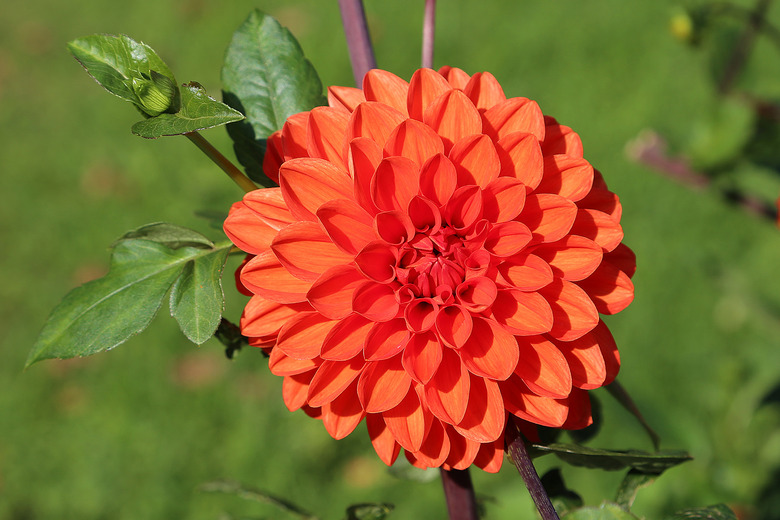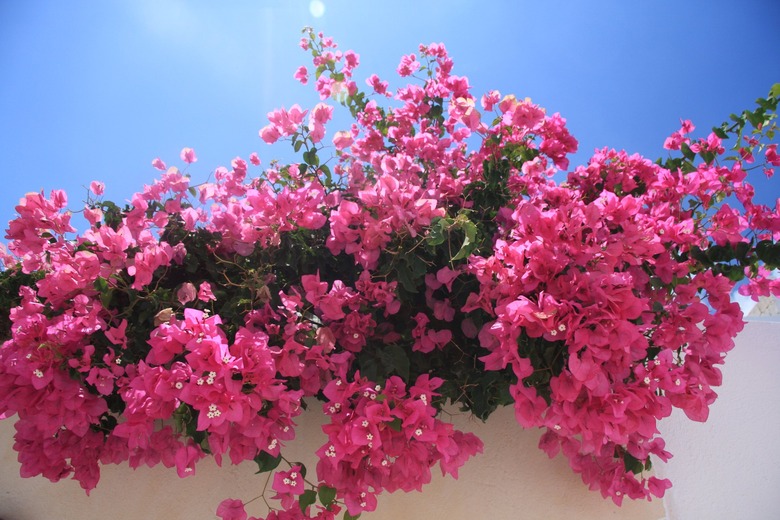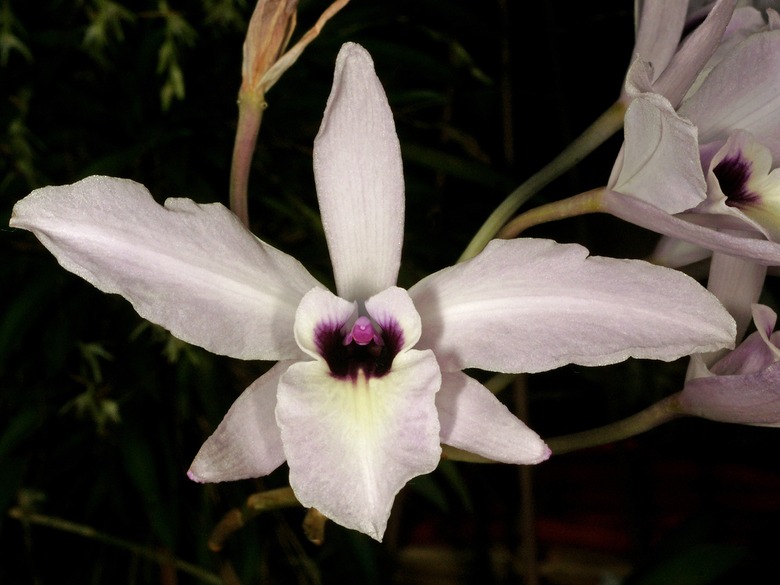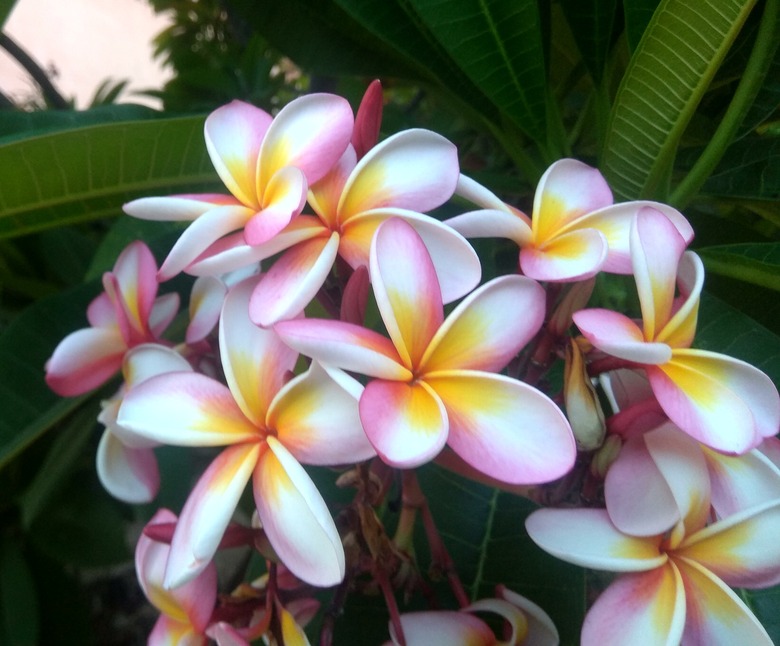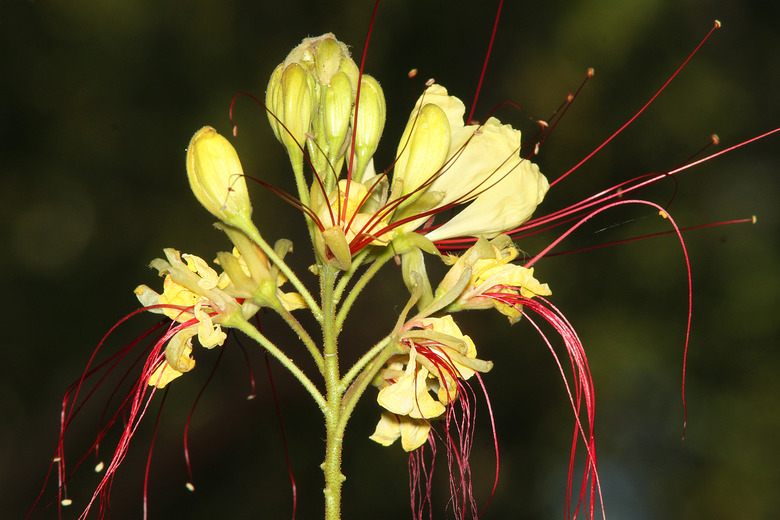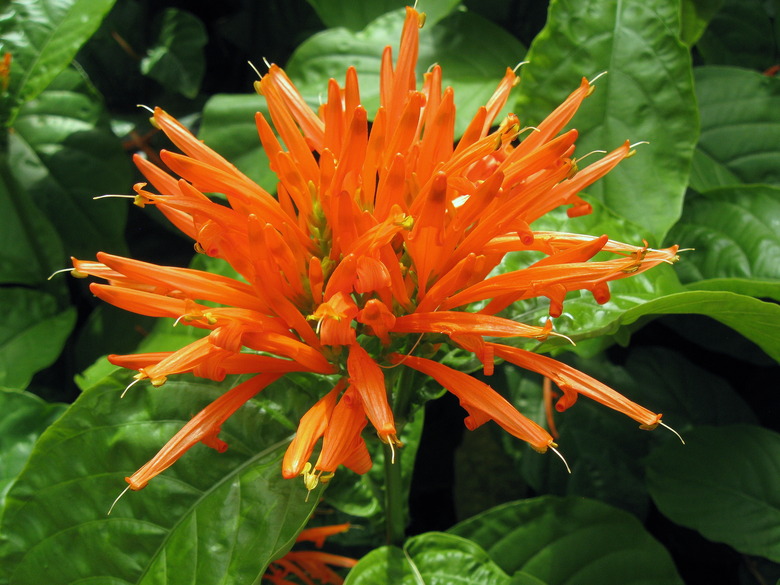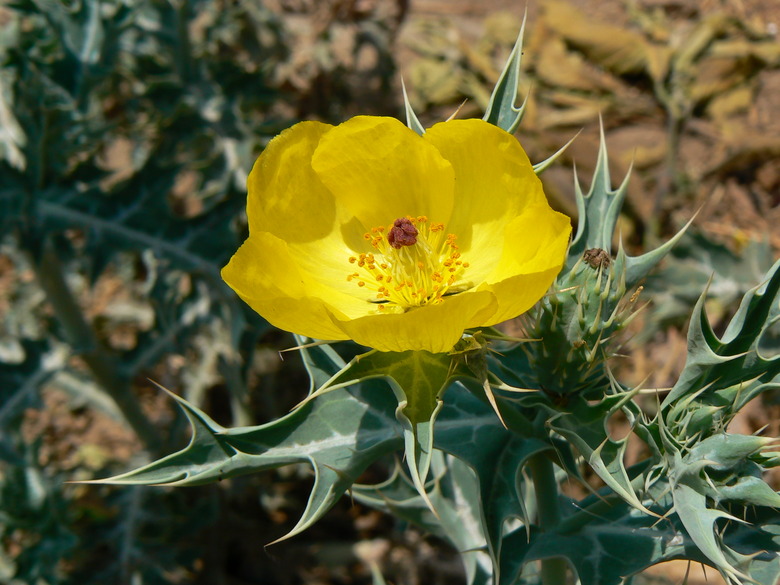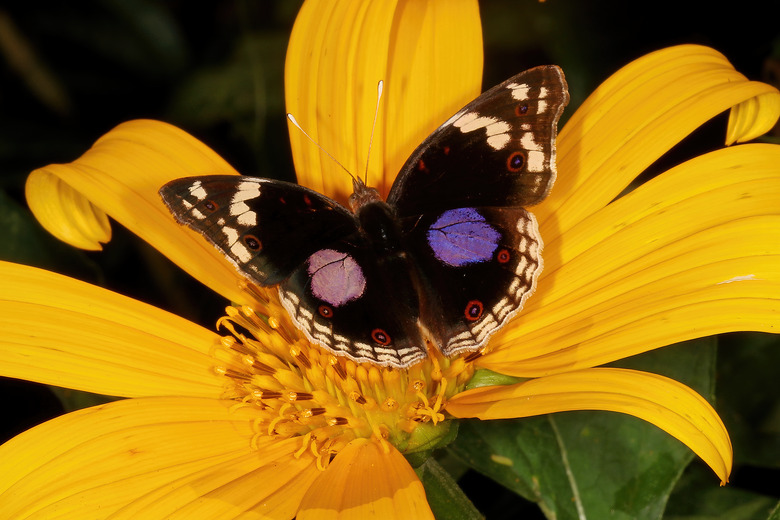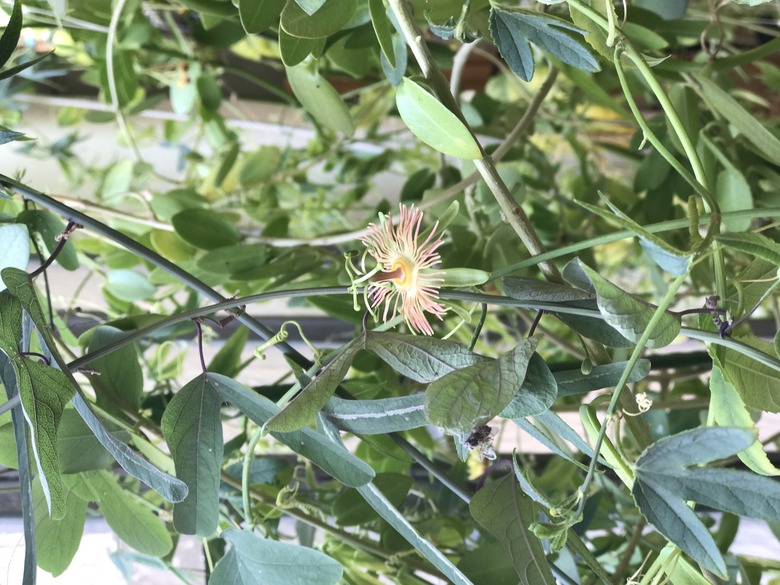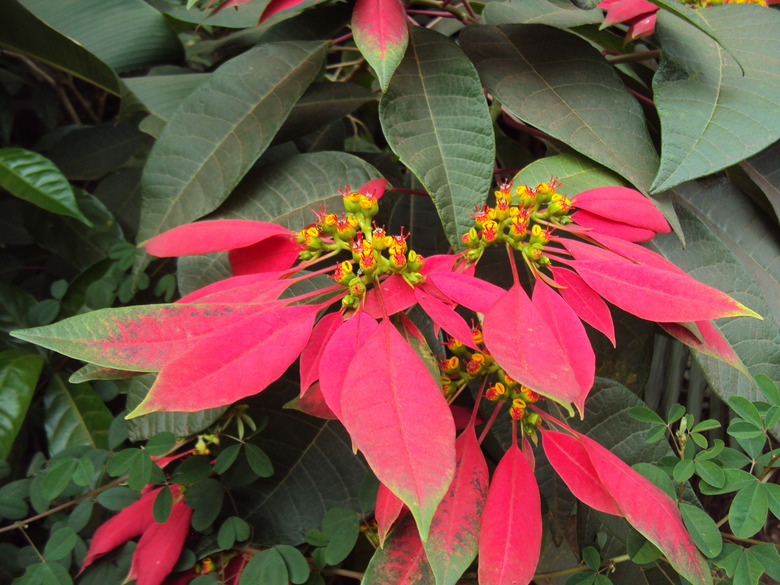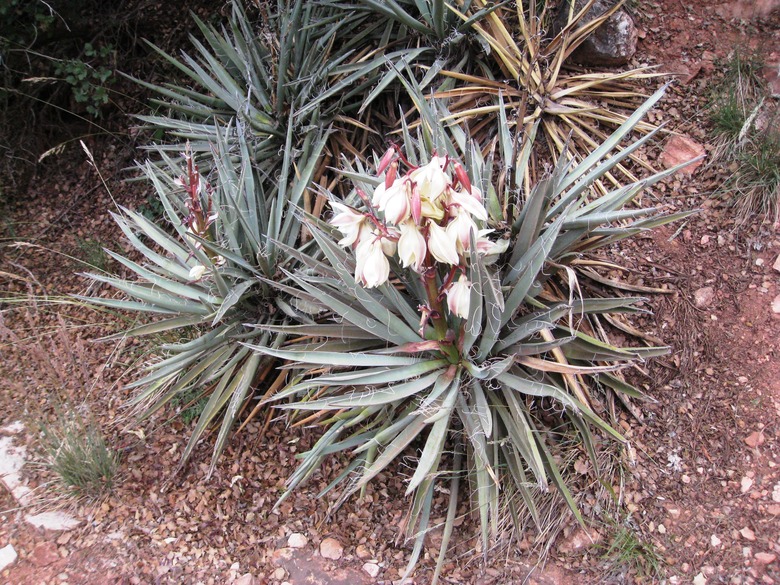Exotic Flowers Of Mexico: A Guide
Many delightfully exotic flowers of Mexico fill the gardens of the United States' southern neighbor. Colorful and fragrant, many Mexican flowers can also be grown north of the border or in flowerpots indoors.
Before planting any non-native species in the garden, however, check the U.S. Department of Agriculture plant hardiness zones and invasiveness potential, as well as the plant's environmental needs.
Mexico’s Diverse Environments
Mexico is a land of many biogeographic regions. From the northern deserts to the tropical forests of the Yucatan, the rocky Baja coast to inland valleys to the volcanic mountains, there's a multitude of climate and temperature zones where exotic flowers, fruits, birds and animals thrive.
Colorful bougainvillea and poinsettias grow in gardens, and exotic orchids can be found in trees and homes around the nation. When selecting an exotic flower from Mexico, consider the USDA zones, light and water requirements when planting outdoors in the garden or plan to take the plants indoors for the winter.
Dahlia: The National Flower of Mexico
No article on the exotic flowers of Mexico could be written without the inclusion of the dahlia (Dahlia pinnata), which is the national flower.
Native to Mexico and Central America, dahlias prefer warm temperatures, consistent moisture and organically rich, well-drained acidic soils. They flower best in part shade and part sun with afternoon shade in the hottest climates.
The first dahlia species exported to Spain were Dahlia pinnata, Dahlia rosea and Dahlia coccinea. Since its introduction, many cultivars have been developed in a wide range of sizes, colors and flower types.
- **Common Names:** Bedding dahlia, garden dahlia
- **Type:** Perennial tuber
- **Size:** 1 to 6 feet tall and 1 to 2 feet wide
- **Flowers:** Single, double, pompom, ball and more
- **Colors:** White, yellow, pink, salmon, orange, lavender, purple
- **USDA Zones:** 9 to 11, plant as an annual elsewhere
Bougainvillea
While originally from South America, the colorful flowers of bougainvillea (Bougainvillea spp.) are found all over Mexico, growing up and over walls, on trellises and pergolas, and trained to a shrub form.
These thorny, woody vines thrive in full sun in acidic loamy and sandy soils. The flowers are made up of three small white blossoms surrounded by three to six colorful bracts, which are modified leaves.
The sharp, 1-inch-long green thorns are hidden amid the green leaves; use caution when planting and pruning or plant a thornless cultivar like 'Miss Alice.'
- **Common Names:** Paperflower, paper flower, Santa Rita flower
- **Type:** Evergreen woody vine
- **Size:** 15 to 40 feet tall and wide
- **Flowers:** Colorful bracts around a tiny white flower
- **Color:** White, yellow, pink, red, burgundy, lavender, purple
- **USDA Zones:** 9b to 10a
Flor de la Concepción Orchid
The flor de la concepción (Laelia rubescens) is a perennial epiphytic orchid found in Mexico and Central America. While it has escaped cultivation in subtropical and tropical climates like Florida and Cuba, it can be grown as a houseplant in colder climates without fear of invasiveness.
Plant in an orchid pot filled with chunky orchid mix. Allow the mix to dry before watering, and then put the pot in the sink and let room temperature water trickle into it until it has absorbed enough moisture to wet the mix and roots. Place the orchid in a window that receives morning or evening sun with filtered light during the hottest part of the day.
- **Common Names:** Flor de Jesús, guarita, pale laelia, rosy tinted laelia
- **Type:** Epiphytic
- **Size:** 12 to 18 inches tall and wide
- **Flowers:** Multiple fragrant flowers on arching stems
- **Colors:** White, pink, purple with a dark purple spot on the throat
- **USDA Zones:** 9b to 10a
Frangipani
Native to tropical Mexico, Central America and northern Venezuala, the frangipani (Plumeria rubra) thrives in warm, sunny gardens.
Plant this small tree in large containers in a sandy potting mix and take it indoors when temperatures dip below 60°F. Keep it in a cool 50 to 55°F room and reduce watering until new growth appears in spring.
- **Common Names:** Nosegay, pagoda tree, plumeria, temple tree
- **Type:** Deciduous tree
- **Size:** 15 to 25 feet tall and wide
- **Flowers:** Fragrant, 4 inches wide on branch tips
- **Colors:** Bright pink to red
- **USDA Zones:** 10 to 12
Mexican Bird of Paradise
Native to northern Mexico, Central and South America, the Mexican bird of paradise (Caesalpinia mexicana) and its close relative, the red Mexican bird of paradise (Caesalpinia pulcherrima) produce fragrant flowers from spring through fall.
These shrubs thrive in full and part sun as well as part shade. While they tolerate drought, a little water in the summer increases flower production. They can be pruned into single or multi-stemmed tree forms.
While they share a common name, the Mexican bird of paradise, a member of the pea or legume family (Fabaceae), is not related to the south African bird of paradise (Strelitzia reginae, USDA zones 9 to 11).
- **Common Names:**
Barbados pride or pride of Barbados, Mexican caesalpinia, peacock flower
- **Type:** Semi-evergreen, evergreen shrub
- **Size:** 10 to 25 feet tall and wide, depending on the species
- **Flowers:** Flower spikes with 2-inch-wide, azalea-like blossoms
- **Colors:** Yellow, red
- **USDA Zones:** 9 to 11
Mexican Honeysuckle or Firecracker Plant
Mexican honeysuckle (Justicia spicigera) is a small shrub that features orange tubular flowers that attract bees, hummingbirds and other pollinators. It thrives in full sun and partial shade, but benefits from afternoon shade in hot summer climates.
Plant in slightly acidic to neutral, well-drained soil and water regularly, but don't overwater, as it affects flower production. Trim to shape in late winter.
- **Common Names:** Desert honeysuckle, firecracker plant, Mexican indigo, moyotle, orange plume flower, yaxan
- **Type:** Evergreen shrub
- **Size:** 2 to 5 feet tall and wide
- **Flowers:** Tubular
- **Colors:** Orange-red
- **USDA Zones:** 9 to 11
Mexican Prickly Poppy
The Mexican prickly poppy (Argemone mexicana syn. Argemone leiocarpa) is a prickly plant that features the papery flowers typical of the poppy family (Papaveraceae). While it thrives in full sun and neutral-to-acidic dry sandy soils, it tends to be invasive and is considered a serious agricultural weed.
Consider planting annual species like corn or Shirley poppies (Papaver rhoeas) or perennial/biennial California poppies (Eschscholzia californica 'Chrome Queen,' USDA zones 8 to 10) instead of this Mexican poppy.
- **Common Names:** Mexican pricklepoppy, Mexican thistle, prickly poppy, yellow prickly poppy, yellow thistle
- **Type:** Annual or biennial
- **Size:** 1 to 3 feet tall and wide
- **Flowers:** 4 to 6 papery petals, 2 1/2 inches wide
- **Colors:** White, creamy yellow, bright yellow
- **USDA Zones:** 7b to 10a
Warning
In addition to its invasive tendencies, all parts of the Mexican prickly poppy plant, flowers and seeds are highly toxic to humans, pets and livestock if ingested in large quantities. This can result in gastric and respiratory distress as well as convulsions. Keep out of reach of children and pets.
Mexican or Red Sunflower
The Tithonia species includes 10 to 15 species of annuals, perennials and shrubs native to Mexico and Central America. The Mexican sunflower (Tithonia diversifolia) is a fast-growing annual that features 3-inch blossoms that attract bees, butterflies and hummingbirds.
Mexican sunflowers are not related to the familiar annual sunflowers (Helianthus spp.) grown for their tasty seeds and bright flowers however. Once established, this bushy plant is relatively drought tolerant. The flowers are often used in bouquets.
- **Common Names:** Bolivian sunflower,
guasmara, jalacate, Nitobe chrysanthemum, shrub sunflower, tree marigold
- **Type:** Annual
- **Size:** 4 to 6 feet tall and wide
- **Flowers:** 3 inches wide, daisy-like
- **Colors:** Orange-red, red
- **USDA Zones:** 9 to 11
Ojo de Venado or Mexican Passionflower
Among the more exotic flowers, the ojo de venado or Mexican passionflower (Passiflora mexicana) is found south of the border along riverbanks, washes and occasionally on dry mesas. It is rarely found outside of Mexico.
Unlike the lush flowers of other passionflower species, the petals are narrow filaments surrounding a large yellow center. The plants have a pungent scent that resembles mothballs, so plant them downwind from the patio.
- **Common Names:** Díctamo real, itamo real, Mexican passion flower, passion flower
- **Type:** Perennial vine
- **Size:** 10 to 24 feet tall and wide
- **Flowers:** 5 green sepals, narrow petals surrounding a large yellow center
- **Colors:** Orangish-salmon, red to purple petals
- **USDA Zones:** 8 to 11
Warning
The unripe fruits and leaves of all passionflower species are toxic. Keep out of reach of children and pets.
Poinsettia
The colorful poinsettia (Euphorbia pulcherrima), often purchased as part of the Christmas or holiday décor, is a shrub in its native habitat. The flowers are colorful leaf bracts surrounding tiny yellow flowers, which appear from winter through spring.
The holiday poinsettia can be saved by regularly watering until spring, then fertilizing and pinching back to shape the plant. Give it morning sun with afternoon shade or dappled shade through summer. In September, take the plant inside and put it into complete darkness for at least 12 hours every night. When the bracts change color, it is ready for the holidays.
- **Common Names:** Christmas flower, lobster plant, Mexican flame leaf, painted leaf
- **Type:** Deciduous to semi-evergreen shrub
- **Size:** 3 to 12 feet tall and 3 to 8 feet wide
- **Flowers:** Bracts surrounding tiny yellow flowers
- **Colors:** White, pink, red, yellow, bicolor
- **USDA Zones:** 9 to 11
Tip
While the belief that poinsettias are poisonous is still being repeated as a fact, a study by Ohio State University in 1971 showed that this colorful plant is not toxic if ingested. Still, like any other plant, eating the leaves or bracts may result in a stomachache and vomiting. Despite its lack of toxicity, the poinsettia's white, latex-like sap can cause skin irritation and allergic reactions in sensitive individuals, so keep out of reach of children and pets.
Yucca or Banana Yucca
The banana yucca (Yucca baccata) produces flower stalks up to 2 feet tall and features large flowers in early summer. When ripe, the banana-like fruits are filled with seeds and reportedly are most flavorful when heated or roasted.
Native to the high deserts of northwest Mexico and the Southwest, it is not people friendly but makes a lovely backdrop against structures and fences. The leaves are upright with sharp points along the margins; wear protective clothing and gloves when working around the plant. Plant banana yucca in a full sun, dry location in the garden.
- **Common Names:** blue yucca, datil,
Spanish bayonet, Spanish yucca
- **Type:** Desert succulent
- **Size:** 4 feet tall and 6 feet wide
- **Flowers:** Flower stalks with multiple blossoms
- **Colors:** Creamy white, hints of red or purple
- **USDA Zones:** 5 to 11
References
- National Dahlia Society: History of the Dahlia
- North Carolina Extension Gardner Plant Toolbox: Bougainvillea
- CABI: Laelia rubescens (Flor de la Concepción)
- Missouri Botanical Garden: Plumeria rubra
- University of Florida IFAS Extension: Caesalpinia mexicana Mexican Caesalpinia
- Missouri Botanical Garden: Caesalpinia pulcherrima
- Arizona State University: Justicia spicigera
- North Carolina Extension Gardener: Argemone mexicana
- Wisconsin Horticulture Division of Extension: Mexican Sunflower, Tithonia rotundifolia
- Southwest Desert Flora: Passiflora mexicana, Mexican Passionflower
- Missouri Botanical Garden: Euphorbia pulcherrima
- Arizona State University: Yucca baccata
